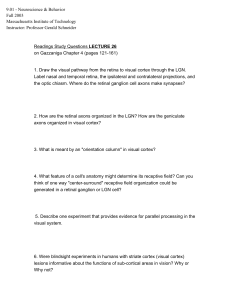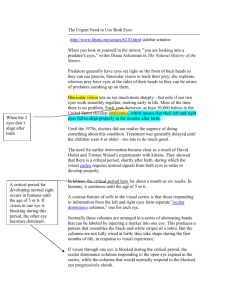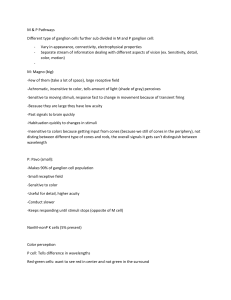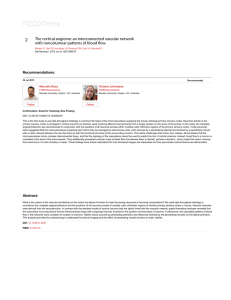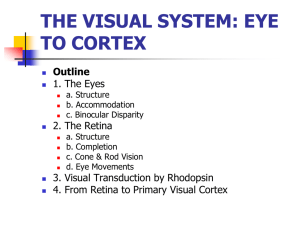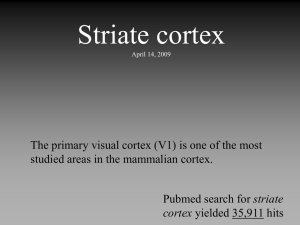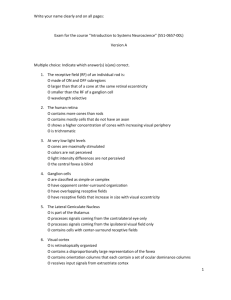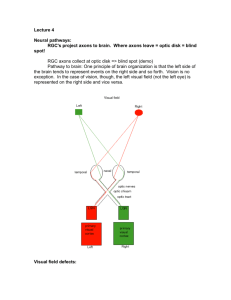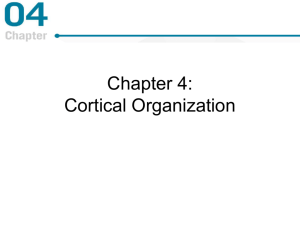Lect5_Vision_4_revised2010
advertisement
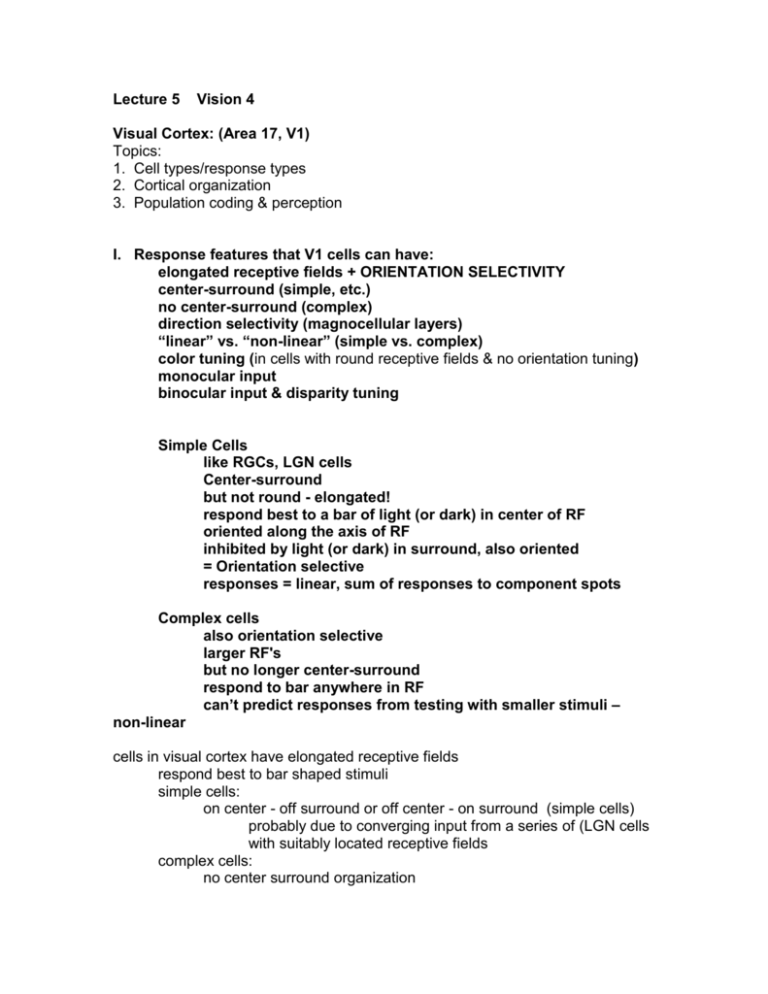
Lecture 5 Vision 4 Visual Cortex: (Area 17, V1) Topics: 1. Cell types/response types 2. Cortical organization 3. Population coding & perception I. Response features that V1 cells can have: elongated receptive fields + ORIENTATION SELECTIVITY center-surround (simple, etc.) no center-surround (complex) direction selectivity (magnocellular layers) “linear” vs. “non-linear” (simple vs. complex) color tuning (in cells with round receptive fields & no orientation tuning) monocular input binocular input & disparity tuning Simple Cells like RGCs, LGN cells Center-surround but not round - elongated! respond best to a bar of light (or dark) in center of RF oriented along the axis of RF inhibited by light (or dark) in surround, also oriented = Orientation selective responses = linear, sum of responses to component spots Complex cells also orientation selective larger RF's but no longer center-surround respond to bar anywhere in RF can’t predict responses from testing with smaller stimuli – non-linear cells in visual cortex have elongated receptive fields respond best to bar shaped stimuli simple cells: on center - off surround or off center - on surround (simple cells) probably due to converging input from a series of (LGN cells with suitably located receptive fields complex cells: no center surround organization instead, respond to onset & offset (How does this relate to X-Y or M-P divisions? These cell types can get input from either sources). II. Organization of cortex: 1. Laminar 2. retinotopic cortical magnification 3. "columnar" orientation ocular dominance 1. Layers 6 layers Distinct input/output roles e.g. layer 4 receives input from thalamus 2. Retinal topography A. Map of retina across surface (parallel to layers) B. Cortical magnification: relative area of cortex representing a particular area of visual field is not proportional to size of that area of the visual field: Fovea = small Foveal cortical region = huge 3. Columnar organization A. Orientation columns cells with common orientation preference = clustered together => orientation columns. Systematic progression through orientation space B. Ocular dominance columns columns of cortex receive input from predominantly one eye or other established during development sorting of inputs based on experience Hubel & Wiesel -raise kittens with one eye sutured shot columns = all other eye but relative experience suture both eyes shut normal ocular dominance column pattern critical period it matters when you do the monocular deprivation Note, though, that unlike LGN many cells do receive input from both eyes. 4. other: Color also shows local clustering – more on that later.
